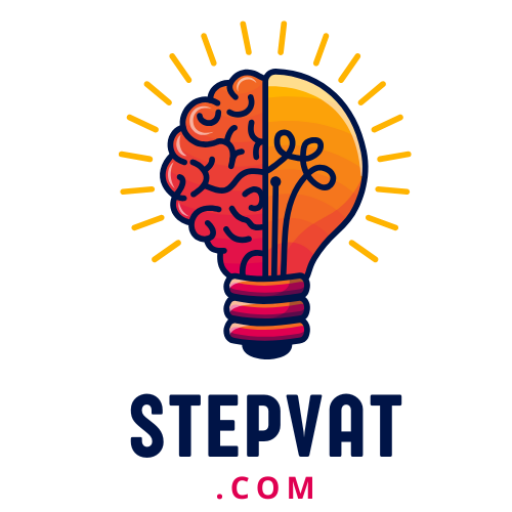Anúncios
Can a few clear numbers tell you if your money teaching is working?
You can measure financial education results using simple, reliable metrics that fit schools, workplaces, and community groups.
Recent surveys show gaps in financial literacy across the United States. The P-Fin Index, FINRA’s national study, and NEFE findings point to uneven knowledge and confidence. These sources give you benchmarks and real-world data to compare your efforts.
CFPB research offers five practical principles: know the people you serve, give timely and actionable information, build skills, use motivation, and make good choices easier. Use this guidance to link instruction to clear outcomes like knowledge gains, skill growth, and behavior change.
What you’ll get is a short roadmap to track progress, simple dashboards to turn data into decisions, and ethical steps to protect privacy. Adapt these steps to your context, and consult advisors when you need tailored support.
Introduction: Why you should measure financial education results now
Many adults report difficulty with everyday money tasks, according to national studies. This gap in financial literacy matters because it shapes real-world choices about saving, borrowing, and work. FINRA’s National Financial Capability Study and NEFE surveys show people struggle to balance debt and saving, and that access and knowledge affect each person’s situation.
The CFPB stresses timing and tailoring: give learners information when they need it to support better financial decisions. In a tight job market and with rising prices, basic finance skills become more urgent. You should track short-term gains and behavior over time rather than assume learning sticks.
- What “results” can look like: in schools, higher quiz scores; at work, more on-time enrollments; in nonprofits, stronger follow-up.
- Use this industry report for clear steps: short surveys, simple metrics, and easy comparisons to national baselines.
- Know the limits: data are snapshots. Avoid overclaims and separate learning from external shocks.
- Be responsible: get consent, limit sensitive fields, and share only what helps your program decisions.
Start small—one pre/post survey and one behavioral indicator—and expand as you have time. Consult qualified professionals for program design and data governance when needed.
The industry baseline: What recent research says about financial literacy in the United States
Recent national research highlights which personal finance concepts trip up many U.S. adults. Use these findings as a practical baseline when you compare local efforts to national trends.
P-Fin Index insights on U.S. adults’ knowledge and decision-making
The P‑Fin Index shows that financial literacy varies widely by topic. Many U.S. adults miss questions on risk diversification, inflation, and compound interest.
Gaps also follow income and gender lines, which affects everyday decisions like saving and product choice.
FINRA National Financial Capability Study trends
NFCS survey data point to struggles with planning ahead, handling debt, and using financial products well. Student loan debt shapes behaviors after graduation.
These national numbers let you set realistic targets for knowledge level and behavior over the coming years.
NEFE national surveys: stress, access, and consumer realities
NEFE polls link money stress to a person’s access to courses and to basic money knowledge. When individuals get timely support, stress often falls.
“Use national baselines to set scope, then adapt to your local situation.”
- Tip: Track the most-missed concepts to shape your curriculum scope.
- Tip: Watch how indicators move over years to spot local deviation from national trends.
- Tip: Treat baselines as context, not a ceiling—local conditions matter.
Measure financial education results: a simple, evidence-based framework
A short, evidence-based approach helps you spot what learners actually can do.
Track five linked dimensions so you get a full picture of progress. This keeps your plan practical and learner-centered.
Five dimensions to track
- Knowledge: short quiz items on core topics.
- Skills: real tasks, like budgeting or interest calculations.
- Attitudes: confidence and motivation to act.
- Behaviors: small actions such as saving or on-time payments.
- Outcomes: practical markers like credit or delinquency trends.
Designing around learner needs
Use the CFPB principles: know who you serve, give timely, actionable help, build key skills, leverage motivation, and make follow-through easy.
Keep it simple: pick 3–5 core indicators per cohort, map each to an objective, and use staged proficiency bands (beginning, developing, proficient).
Be responsible with data: collect only what helps instruction, document assumptions, and link your plan to a trusted guide like the financial literacy measurement plan.
From inputs to impact: linking curriculum design to measurable change
Start by mapping what students do in class to the real tasks you want them to master. That keeps your curriculum practical and tied to observable change.
For K–8, weave budgeting and saving into math practice so young learners build skills during regular lessons. In high school, offer stand-alone modules on credit, student loans, and fraud prevention as Beck & Garris recommend.
Use quick pre/post checks for each unit so you can see if content mapping improves knowledge and application. Track the most-missed items by grade to tweak examples and difficulty.
- Parent support: give simple take-home activities and short scorecards that show strengths and next steps.
- Projects: assign mock budgets or short simulations so youth apply concepts, not just recall terms.
- Early signals: monitor attendance and assignment completion as indicators that your school structure supports learning time.
When budgets are tight, use low-cost experiential models like Classroom Economy and track unit gains to confirm value. Keep feedback clear and brief so parents and teachers can act quickly.
Selecting valid metrics: knowledge tests, behavior logs, and real-world proxies
Start with a small, practical set of indicators so you get trustworthy signals without overloading your team.
Knowledge anchors: Use a few nationally referenced items on compound interest, inflation, and risk to anchor short tests. NFEC’s national test includes these topics and often shows gaps on long-horizon compounding. Keep quizzes brief and comparable to public items so you can benchmark your cohort against wider study samples.
Behavioral indicators: Log simple, consented actions such as on-time bill payments, savings deposits, and sensible credit utilization. These are low-burden proxies of habit change and link directly to money management skills.
Outcome proxies: Track changes in non-sensitive credit report markers and delinquency trends where participants consent. Research shows stronger instruction can relate to fewer delinquencies among young adults, but avoid causal overclaims.
- Collect only needed fields and set clear retention and access rules.
- Add a short money management self-assessment to capture habits and confidence alongside scores.
- Use clear metric definitions and review data monthly to catch issues early.
Benchmarking with national assessments to calibrate your results
A national assessment gives you a reference point to see whether your teaching lifts student ability over time. Use benchmarks to guide pacing and to spot which topics need extra attention.
The NFEC’s 30-question national test has more than 70,000 completions across all 50 states. It combines motivation, subject knowledge, and recognition of the first step. Its sampling and weighting improve representativeness, and its items are mapped to Bloom’s Taxonomy and Webb’s Depth of Knowledge.
Using NFEC’s national test for cross-program comparison
Compare your cohort’s aggregate scores to NFEC summaries to see if pacing or content needs adjustment. For adult groups, focus on sections that match life stage goals. Document how ability grows between pre and post, not just final scores.
Interpreting “most missed questions” to refine instruction
Top missed items often include long-horizon compounding: only 44.27% answered the $100/month at 7% for 70 years item correctly. Study those items to adjust examples, practice tasks, and scaffolding.
- Use benchmarks as directional: explain sample differences and limits to stakeholders.
- Track level targets: move learners from recall to application using Bloom’s and DOK.
- Include credit items: add a basic bank of credit knowledge questions to link lessons to later behaviors.
“Benchmarks help you spot gaps quickly, but treat them as guides, not verdicts.”
Designing evaluations: pre/post tests, comparison groups, and longitudinal follow-up
Good evaluations balance rigor with what you can manage. Keep the plan practical so teachers and staff can run it without extra burden. Use short instruments and clear protocols that match your learning goals.
Pre/post alignment: “teach to the test” without teaching the test
Align pre and post items to your objectives so you coach skills and not specific questions. Use item types that check application, not rote recall.
Tip: keep quizzes brief and identical in scope, then swap examples to reduce item memorization.
Quasi-experimental approaches when RCTs aren’t feasible
When you can’t run randomized trials, use comparison groups like later cohorts or matched peers. These approaches give a reasonable counterfactual without heavy cost.
Document how groups differ and report limits so stakeholders understand inference boundaries.
Tracking persistence of effects over time
Collect follow-up data at multiple points over years to see whether knowledge and behaviors stick. Short surveys that ask about concrete actions—opening a savings account or making a repayment plan—work well.
Combine those surveys with simple behavior logs and instructor notes to explain unexpected patterns.
Sampling, weighting, and representativeness considerations
Record your sampling choices and consider basic weighting if your sample skews from the target population. NFEC uses stratified sampling and weighting to improve representativeness; you can borrow this idea at small scale.
- Store de-identified data for analysis and delete personal identifiers when they are no longer needed.
- Triangulate quantitative study findings with qualitative instructor notes to add context.
- Share limitations openly so stakeholders can make informed decisions.
“Use practical designs that fit your capacity and report limits clearly so your findings guide real decisions.”
Attitudes and motivation: why they matter and how to measure them
How learners feel about money often predicts what they will do with what they learn. Attitudes shape engagement, practice, and follow-through. Track confidence and beliefs alongside quiz scores to see where coaching helps most.
Linking money attitudes to behavior and learning progression
Use short attitude scales to map beliefs to everyday actions like saving and on-time bill payment. Watch classroom signals — practice completion, questions asked, and peer teaching — as early predictors of progress.
Applying Bloom’s and Webb’s DOK to set pacing and depth
The NFEC links pacing to Bloom’s Taxonomy and Webb’s DOK so you set the right level before moving to analysis tasks. Add a weekly self-management checklist so learners plan study time and small money tasks.
- Practical tip: Tie reflection prompts to real life goals so lessons feel relevant.
- Report: show attitude shifts alongside knowledge and skill markers to target supports.
- Keep it kind: avoid labels; give specific, constructive steps learners can change.
Equity lenses: measuring impact across gender, income, and race
Looking at subgroup gaps helps you design supports that reach more people. Use equity lenses so your work benefits diverse adults and communities across the united states.
Document gaps carefully: GFLEC and FINRA report persistent knowledge and confidence differences by gender and other demographics among u.s. adults. Those patterns show where your program should add focused supports without overclaiming cause and effect.
Documenting gaps identified by GFLEC, FINRA, and surveys
Record who is underperforming on core items and why. Note trends by gender, income, race/ethnicity, and age so you see real variation in literacy and confidence.
Stratified reporting and goal-setting for underserved groups
- Stratify your cohort by gender, income, race/ethnicity, and age so you spot who benefits and who needs more support.
- Compare subgroup trends to united states baselines from national survey sources to find gaps you can address.
- Track participation and completion rates by subgroup to ensure access, not just outcomes.
- Add targeted supports—extra practice, language access, or coaching—and track whether life impact follows over time.
- Include simple debt and product-use indicators so you can see if knowledge aligns with safer consumer behaviors.
- Report with person-first language and share methods and sampling choices to keep population differences transparent.
- Set realistic, staged goals with stakeholders and revisit them as your data improve.
“Use stratified reporting to turn equity insights into focused action without overstating causality.”
Age and life stage: young adults, students, and older adults
Young people and older learners face different choices, so pick metrics that match their stage. The right signals help you focus on actions that matter now, not distant theory.
High school mandates and credit outcomes among 18-21-year-olds
Research by Urban, Schmeiser, Collins, and Brown links stronger high school personal finance instruction to fewer defaults and higher credit scores for 18–21-year-olds.
Track these short-term markers for young adults:
- On-time payments and credit utilization over one to two years (with consent).
- Completion of required modules and post-graduation follow-up that shows safer credit behavior.
- A simple budgeting check for the first year after leaving school to spot gaps in month-to-month planning.
College decisions: financial aid mix and credit card balances
Stoddard and Urban find that strong high school coursework ties to higher FAFSA submission and lower credit card balances.
- FAFSA submission and aid acceptance mix in the first year.
- Trends in credit card balances and timely bill payments during college years.
- One short check on student budgeting to link lessons to immediate financial decisions.
Service members and older adults: tailoring measures to context
For members of the armed forces, track PCS move expenses, benefits uptake, and emergency savings. For older adults, focus on fraud awareness items and documented support networks.
- Include a brief module for parents/guardians on co-signing, PLUS loans, and shared expectations.
- Tie instruction to immediate choices—aid, credit building, or emergency funds—so indicators reflect real actions.
Educator capacity: the role of teacher training and requirements
Build teacher capacity with short, practical support so your program scales. Start by giving educators clear training and a light-touch plan that fits the school calendar.
Rising teacher confidence and state trends
Since 2009, teacher confidence teaching personal finance rose from 9% to about 70%, a change that tracked with states doubling requirements (Urban & Harvey). That boost shows how mandates plus professional development raise educator readiness.
Experiential models and low-cost implementation
Use one hands-on model, like Classroom Economy, to cut prep time and increase student engagement. Field studies show knowledge gains from low-cost simulations that work well for youth and students in diverse schools.
- Train: invest in short PD sessions so educators feel ready to teach core curriculum topics.
- Start small: pilot one grade with an experiential unit, then scale based on a quick survey of teacher needs.
- Engage parents: provide short handouts and optional workshops so learning continues at home.
- Track: monitor PD uptake, classroom implementation, and student progress to learn what supports work best.
- Share wins: collect teacher stories to build momentum with leadership and boards.
Policy and program context: what mandates do—and don’t—change
Policy can open doors by giving you time and formal permission to teach core topics. But a mandate alone rarely creates lasting behavior shifts for learners.
Graduation rates and personal finance requirements
Evidence from the Council for Economic Education and Urban shows that adding a personal finance requirement did not lower graduation rates by race, gender, or income. That helps address a common concern when leaders consider a new mandate.
In short: policy did not harm completion, but it also did not guarantee improved habits among u.s. adults or teens without follow-up supports.
Focusing content on immediate relevance for better engagement
- Use mandates to secure time, then fill that time with practical topics like budgeting, credit, and long-term debt management.
- Pair policy wins with teacher training, clear materials, and ongoing evaluation so the classroom leads to action.
- Include a short end-of-course survey to learn which topics adults and youth found most useful.
- Build partnerships with counselors and community groups to extend supports beyond class time.
Track participation and completion as policy indicators, and report both strengths and gaps so leaders can invest where the impact will be greatest.
Translating findings into dashboards and decision tools
Turn raw program data into a single page that helps you act fast. A compact dashboard gives you clear signals about who is on track and who needs support. Keep the view simple so busy staff can spot issues in minutes.
Core KPIs to include
Focus on four groups:
- Participation — enrollment, attendance, and survey completion.
- Mastery — pre/post score bands and item-level “most missed” lists (use NFEC framing and Bloom’s/DOK to set difficulty).
- Application — simple behavior indicators like savings actions or on-time payments.
- Retention — follow-up checks at 3–6 months to see lasting change.
Targets, alerts, and cadence
Set thresholds using national baselines so your targets stay realistic and comparable. Add lightweight management alerts: who needs coaching now, which classes require pacing changes, and when to reteach topics.
Report monthly in schools, quarterly in nonprofits, and semiannually for employers. Track coach capabilities and support capacity so your system scales with demand. Keep the dashboard clean, with definitions and notes so leaders read your findings correctly.
Data quality, ethics, and responsible use
Treating information with care builds trust and improves long-term program value. Your handling of participant records shapes whether people join, stay, and act on what they learn.
Privacy, consent, and data minimization
Get clear consent and explain in plain language what you collect and why. Limit fields to what you need and set retention limits that protect adults and family members.
- Use de-identified or aggregated files for most reports.
- Limit access to identifiable records and log who views them.
- Include retirement and debt topics in your privacy review because they may reveal sensitive accounts.
Avoiding overclaims; distinguishing correlation from causation
Document your study methods, sampling, and any weighting choices so readers know what your numbers can and cannot show. NFEC notes stratified sampling helps represent a population, but design limits still apply.
- Avoid causal language unless your design supports it; describe associations and implications for decisions instead.
- Train staff on secure entry, storage, and respectful communication with consumers and individuals.
- Review data practices annually and adjust as tools, policy, or risk change.
Real-world snapshots: what improvement looks like in practice
A short cycle of test–tweak–retest helps you turn gaps into clear teaching wins. Start by scanning item-level patterns from a quick pre/post study. That gives you focused clues about which content needs extra practice.

Program tuning after item analysis of missed concepts
Be concrete and small. After testing, flag the most-missed concepts and add short practice loops so students master them before you move on.
- If budgeting items lag, run a 15-minute lab where students build a monthly plan and then revise it after a surprise expense.
- When money attitudes block action, add a brief reflection tying a goal to one near-term step they can take this week.
- Where questions show confusion on compound interest or safe credit steps (according new survey), add a one-page guide on debt basics.
- Compare sections after the study to see which activities lifted results the most and share snapshots with staff.
- Use quick follow-up surveys to confirm examples feel relevant to students.
- Keep changes small and test them so you can link gains to specific tweaks.
- Report wins in simple dashboards so everyone sees what worked.
- Use experiential tweaks like a Classroom Economy lab to boost application with little cost.
“Iterative tweaks can convert common gaps into lasting skill gains.”
Limitations, risks, and how to improve your measurement over time
No single study can capture every way programs affect people’s money choices over time.
Be candid about limits. Expect noisy data and short-term swings. Don’t react to one cohort; smooth trends across months so you spot real shifts.
Account for life events. Graduations, job changes, or health shocks can change outcomes independent of instruction. Note these events when you interpret impact for adults in your program.
- Revisit your indicators every six months so they match the decisions your audience faces.
- Budget annual time to refresh test items and retire questions that no longer discriminate well.
- Add light-touch follow-ups at one or more years to see whether gains persist beyond the course window.
- Track risks—data loss, misinterpretation, and bias—and set clear mitigation steps you can act on quickly.
- Keep stakeholders informed about what your work can show and what it cannot, and celebrate process improvements that make measurement fairer and simpler.
Over time, use these steps to tighten your design and improve how you report impact from personal financial programs.
Conclusion
Close with a clear, practical plan. Use a small set of indicators to track how your work shifts financial literacy over time. Keep checks simple so staff and families can act.
Focus lessons on real personal finance choices people face today. Share a compact dashboard with your team so actions stay tied to evidence and the everyday money decisions of your learners and life at home.
Protect data for members and family participants, refresh your measures each year, and adapt this structure to your local needs. Studies by CEE and others link exposure to economic and financial literacy to better behavior, but targeted supports matter.
If questions come up, consult qualified educators, advisors, accountants, or lawyers. Treat findings as guides, not guarantees, and keep listening as you improve.



